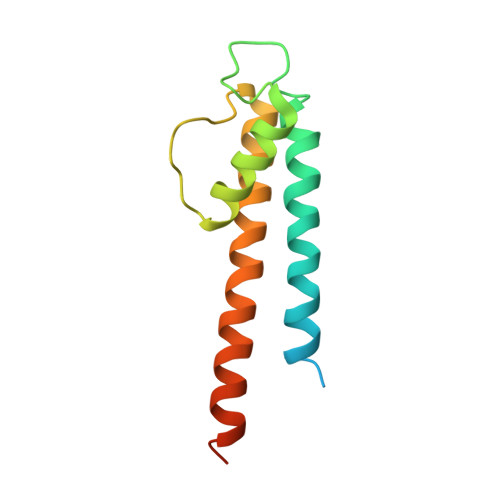Electron Spin-Echo Envelope Modulation (ESEEM) Reveals Water and Phosphate Interactions with the KcsA Potassium Channel
Cieslak, J.A., Focia, P.J., Gross, A.(2010) Biochemistry 49: 1486-1494
- PubMed: 20092291
- DOI: https://doi.org/10.1021/bi9016523
- Primary Citation of Related Structures:
3IFX - PubMed Abstract:
Electron spin-echo envelope modulation (ESEEM) spectroscopy is a well-established technique for the study of naturally occurring paramagnetic metal centers. The technique has been used to study copper complexes, hemes, enzyme mechanisms, micellar water content, and water permeation profiles in membranes, among other applications. In the present study, we combine ESEEM spectroscopy with site-directed spin labeling (SDSL) and X-ray crystallography in order to evaluate the technique's potential as a structural tool to describe the native environment of membrane proteins. Using the KcsA potassium channel as a model system, we demonstrate that deuterium ESEEM can detect water permeation along the lipid-exposed surface of the KcsA outer helix. We further demonstrate that (31)P ESEEM is able to identify channel residues that interact with the phosphate headgroup of the lipid bilayer. In combination with X-ray crystallography, the (31)P data may be used to define the phosphate interaction surface of the protein. The results presented here establish ESEEM as a highly informative technique for SDSL studies of membrane proteins.
Organizational Affiliation:
Department of Molecular Pharmacology and Biological Chemistry, Northwestern University Feinberg School of Medicine, 303 East Chicago Avenue, Chicago, Illinois 60611, USA.

















